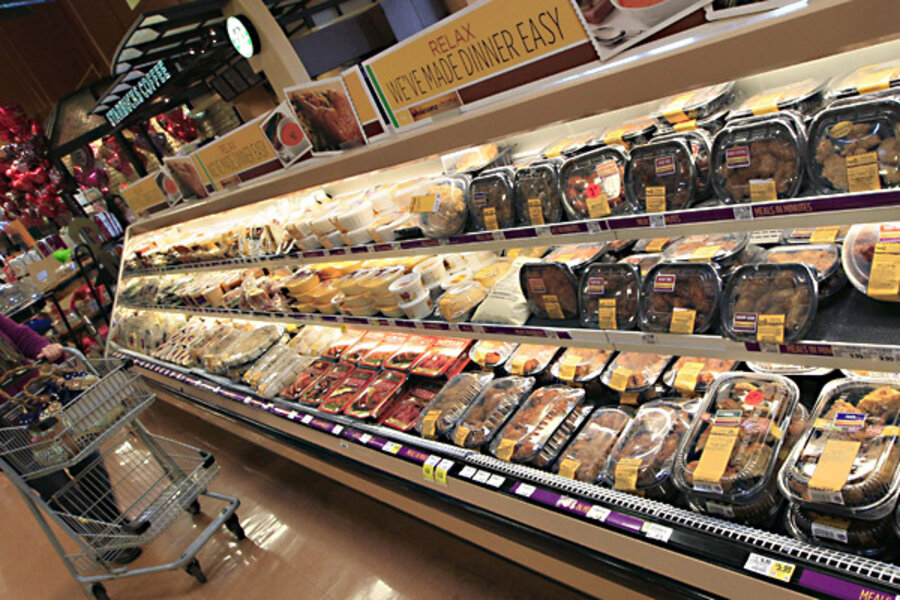Bringing home the bacon: More men doing the grocery shopping.
Almost 500 years after John Donne proclaimed that no man is an island, it can now be said that some men have a man aisle — a sign of the grocery-shopping times that illustrates how roles have shifted in 21st century families. This month, the National Retail Federation's Stores Magazine even reports that there's a change afoot in who's doing the shopping, though this shift first came to light via 2010 U.S. Census figures, which revealed 20% of fathers with preschool-aged children and working wives were the primary caregivers at home.
Yet, if the media needed more tangible proof, it found it in a somewhat silly place: the corner of a New York City grocery store dedicated to manly goods, and dubbed "The Man Isle" [sic] by the operators of Westside Market NYC. Media outlets such as the New York Post and Los Angeles Times couldn't get enough, though a closer look reveals that this "man aisle" is more marketing gimmick than manly substance. Check out the store photos posted by Business Insider and you'll see what we mean: Doritos? Ramen noodles? Teriyaki beef jerky? Hmmm. Could this really be the "caveman aisle" instead?
Still, the hype over one store's cheap (and successful) publicity stunt can't obscure the overarching facts: More men grocery shop today than the guys of previous generations. Chalk up the Great Recession as a key factor: The Center for American Progress reports that between December 2007 and mid-2009, a sharp rise occurred in the number of married couples where the woman was left to bring home the bacon because her husband was unemployed. And so the men (including yours truly) stepped up to literally bring home the bacon.
But do men need a "man aisle" to get the hang of grocery shopping, or is such a dedicated aisle merely a crutch for men to feel more comfortable and macho at the supermarket? Historical trends lead us to believe that the answer is no; just as women have diversified in skills and opportunities over the last few generations, we now see more men cooking at home, and taking an interest in the gourmet offerings at stores such as Trader Joe's and Whole Foods. And as the reporter of this story can attest, a family that's bucking traditional gender roles in the name of making complicated economic times work, needs no incentive from gimmicky man aisles.
But don't expect the "man aisle" trend to slow down anytime soon. Nielsen reported in 2011 that men are shopping more than ever, while the St. Louis Post-Dispatch cites statistics showing that 31% of grocery shopping is being done by men, up from about 14% in the 1980s.
That study, by the way, was done by the broadcast equivalent of the man aisle: ESPN, the sports network. That fact alone speaks volumes to us. But what say you, dealnews readers? Are you a household wherein the man handles the domestic duties? If so, do you find these man aisles enticing or irrelevant? Sound off in the comments below.
Lou Carzolo is a contributor to Dealnews.com






